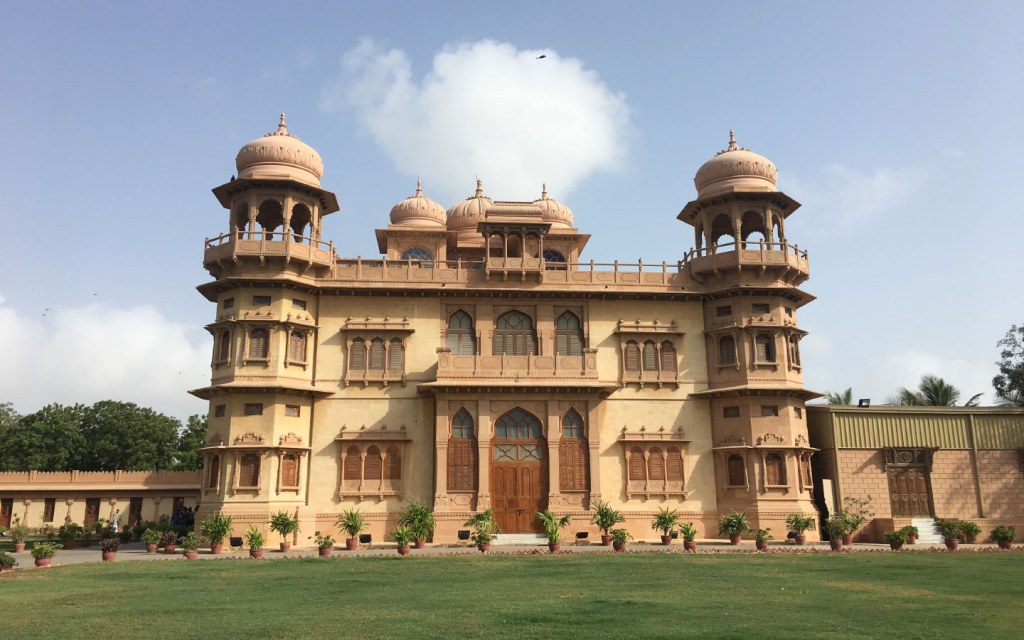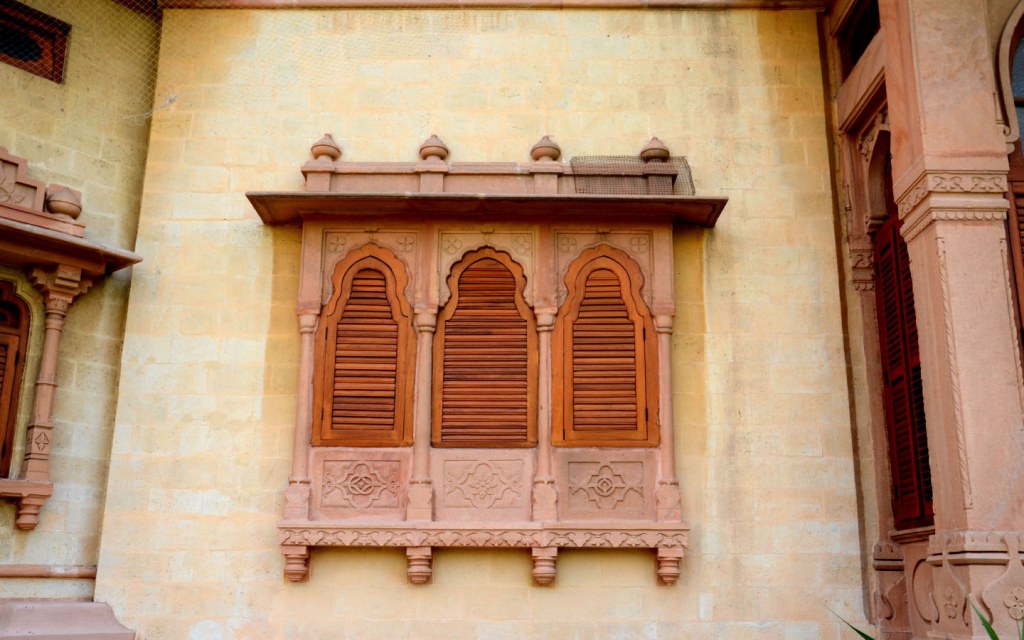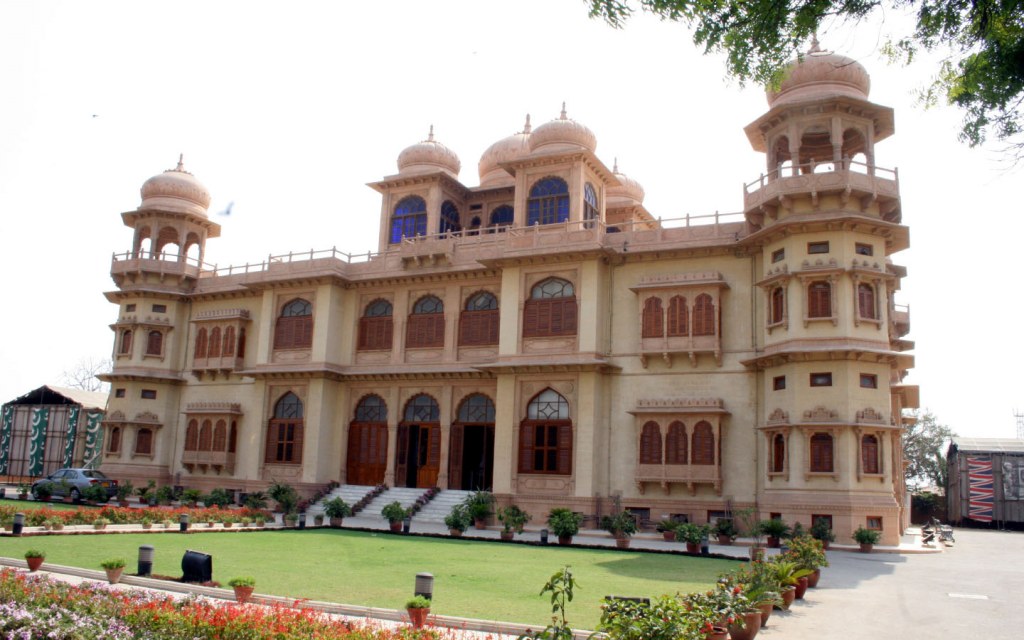Update: (Oct. 11, 2021): In a recent development, the Sindh High Court has ordered the authorities to start writing and calling the property of Fatima Jinnah in Karachi “Qasr-e-Fatima” instead of “Mohatta Palace”. According to this newly released court order, the place should be officially renamed as soon as possible.
During the hearing of the case, Fatima Jinnah’s will was also discussed in the courthouse. The Mother of the Nation wanted to convert Qasr-e-Fatima into a medical college for women. The court is looking into the case as to why the building was converted into a museum in the first place instead of an educational institution. Well, it is an ongoing case and we’ll update this blog if there are any further developments, so make sure to keep checking back.
In the meantime, if you want to know more about Qasr-e-Fatima, formerly known as Mohatta Palace, continue reading this blog.
The bustling metropolitan of Karachi is home to a number of historical monuments dating back to the British colonial era. From the majestic Frere Hall to the grand Empress Market, these iconic buildings have been a part of the city’s cultural heritage since the inception of Pakistan. However, one particular pre-partition era structure that stands out from the rest is the beautiful Mohatta Palace. It was also the last home of Fatimah Jinnah, the sister of Quaid-e-Azam Muhammad Ali Jinnah.
Located in the upscale neighbourhood of Clifton, Mohatta Palace was built in 1927 to serve as the summer residence of a wealthy Hindu businessman named Shiv Ratan Mohatta. This palatial house covers an area of more than 2000 sq. yds. and was constructed at a short distance from the coastline offering an excellent view of the Arabian Sea at the time.
Now, the magnificent palace serves as a museum and a centre for cultural activities. So, if you’re planning to visit Karachi even for a day, make sure to include Mohatta Palace Museum to your travel itinerary.
Quick Facts about Mohatta Palace
Here are some quick historical facts about Mohatta Palace, one of the most famous buildings in Karachi.
| Address | 7 Hatim Alvi Rd, Block 5, Old Clifton, Karachi. |
| Contact No. | 021-35837669 |
| Timing | 11:00 AM to 6:00 PM (Tuesday to Sunday) |
| Built in | 1927 |
| Area Size | 2055 sq. yds. |
| Commissioned By | Shiv Ratan Mohatta |
| Architect | Agha Ahmed Hussain |
| Architectural Style | Indo-Saracenic Architecture |
The History of Mohatta Palace (now to be known as Qasr-e-Fatima)

Nearly 20 years before the creation of Pakistan, Shiv Rattan Mohatta, a successful merchant and ship handler from Rajasthan, commissioned one of the first Muslim architects in the sub-continent, Ahmed Hussein Agha, to build a palace-style house in the posh seaside locale of Clifton. As the story goes, Mohatta had chosen to live near the sea because of his ailing wife. At the time, when skyscrapers and residential towers didn’t surround Mohatta Palace, one could see the ocean from the balcony and the rooftop.
Mr Ahmed Hussein, who had come to Karachi from Jaipur, designed Mohatta Palace in Indo-Saracenic style by combining the prominent features of the Mughal architecture with that of the British period.
After the Partition
Following the independence of Pakistan, Shiv Rattan Mohatta and his family moved to the newly-created India, leaving behind their legacy in the form of a well-maintained residence with vast gardens and a scenic view. Shortly after the residents vacated Mohatta Palace, the Government of Pakistan acquired it to house the offices of the Ministry of Foreign Affairs. However, since Clifton was not as developed at the time and thus not populated, the ministry had to start a bus service between the palace and Empress Market to ease the commute for its employees.
In 1967, the Foreign Office shifted to Islamabad and Mohatta Palace was handed over to Fatima Ali Jinnah. The palace’s official name was changed to Qasr-e-Fatima and it soon became the hub of her presidential campaign against then-President Ayub Khan. After her death, her sister Shireen Jinnah lived in the historical building until her demise in 1980. It is said that she wanted Mohatta Palace to be turned into a college for women. However, the palace was sealed due to the litigation issues over the rights of the property.
Mohatta Palace Restoration and Conversion
In 1995, the provincial government of Sindh asked then-Prime Minister Benazir Bhutto for funds to purchase the crumbling structure. The federal government gave PKR 70 lakh to the cultural department, which spent 61 lakh to purchase this historical building in Karachi. Meanwhile, the rest was spent on the restoration. The government also set up an autonomous Board of Trustees to not only manage the palace and oversee the renovation but also look over its conversion into a museum devoted to culture and arts.
Nearly four years later, Mohatta Palace Museum in Karachi formally opened its doors to the public on Sept. 15, 1999. Owing to its breathtaking architecture and excellent location, it has become one of the top places to hold major public and private exhibitions in the city.
The Architecture of Mohatta Palace Museum

The elegant Mohatta Palace and its sprawling lush green gardens are spread over an area of approximately 2055 sq. yds. The building comprises three levels: the basement, ground floor and first floor. Visitors can also access the roof, which once offered a mesmerizing view of the Arabian Sea but now provides a view of the city’s incredible skyline.
Easily of the most impressive examples of Indo-Saracenic architecture in Pakistan, this historic building was constructed from pink Jodhpur stone along with the local yellow Gizri stone. These stones were particularly used to safeguard the structure against the sea breeze.
Moreover, Mohatta Palace Museum in Karachi has nine octagonal domes, including eight smaller ones and one bigger one in the middle. All the windows, balconies, stone brackets, railings and balustrades are intricately designed and decorated with beautiful floral and peacock motifs. The façade of the palatial house includes big windows overseeing the front garden. Meanwhile, large arched windows with stained glass are present on the rear end.
Situated in the heart of Karachi, this historical building also has sophisticated teak wood doors, windows and staircases, which are still in good condition.
That’s not it.
One of the things you don’t know about Mohatta Palace (probably) is that despite being designed in the 1920s, its layout is quite modern. For instance, the basement in the north of the building has a set of stairs that lead to a hot water pool and a changing room. Apparently, even at that time, the palace hadc a water heating and cooling system installed. Moreover, there are small vents on each side of the pool chamber, allowing sunlight and fresh air to enter the room.
The Interior of Qasr-e-Fatima (Mohatta Palace Museum)

Considered one of the most important historic buildings in Karachi, Mohatta Palace Museum in Karachi comprises two floors and a basement. Once you enter the building through the wide front door and step into the main corridor, you can see the entrance to large stately rooms, which are all connected to a spacious hallway. These were built to entertain guests and visitors. Two of these massive rooms are situated on the right side of the entrance while there are two more on the left. There is also another room at the back. The entire palace has beautiful flooring, ornate ceilings and a majestic teak wood staircase connecting the ground floor to the first.
The first floor is just as lavish and spacious, with beautifully designed balconies and windows overlooking the vast gardens. However, unlike the ground floor, this floor was meant for the private use of the residents. The layout includes a brilliantly large hall with a total of ten doors opening into the corridor. There are also four bedrooms, each of which have attached bathrooms and dressing room along with two sets of doors.
If you go on the roof, you’ll come across a stunning structure with five domes. Situated on an elevated platform with a small staircase, it was meant to serve as a seating area to protect the residents of Mohatta Palace from the harsh rays of the sun during the summer days.
Mohatta Palace, one of the most historical museums in Karachi, is open to the public for visitation. Is also one of the most popular places in the city to hold cultural exhibitions and art shows.
The prime location of Mohatta Palace makes it extremely accessible. In fact, it is a popular area to buy property in Clifton.
Mohatta Palace Karachi Timings
The museum opens from Tuesday to Sunday between 11:00 AM and 6:00 PM.
It remains closed on Monday and during certain public holidays.
Mohatta Palace Museum Tickets
Adults: PKR 30 only
Senior citizens, school students and children under 12-years-old can enter the premises free of charge.
For those who have an interest in photography, Mohatta Palace Museum is also one of the best places to take photos in Karachi. However, visitors are not allowed to take photos inside the building.
To learn more about the historical places in Karachi, head over to Zameen Blog – the top lifestyle blog in Pakistan.



